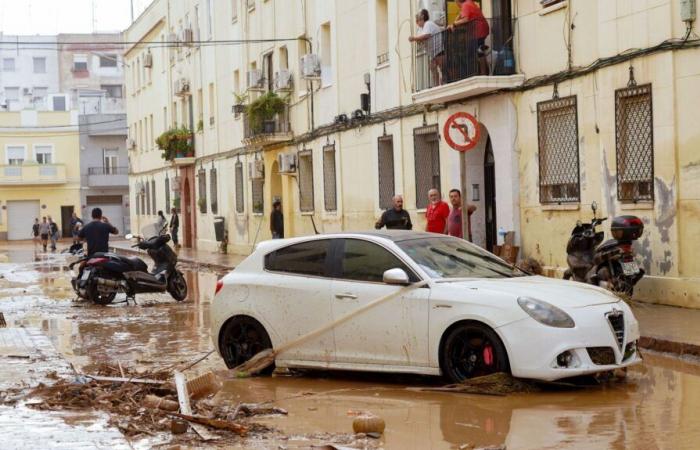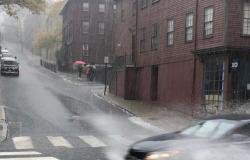The dramatic bad weather which hit the south-east of Spain caused the death of at least 158 people, the highest human toll in this country since deadly floods in October 1973.
Huge amount of precipitation, presence of dry or artificial soils, lack of responsiveness from the authorities… Here are the factors explaining this terrible number of victims, according to several experts.
Rarely violent meteorological phenomenon
According to the Spanish Meteorological Agency (Aemet), the equivalent of “of a year of precipitation“, in just a few hours. In Chiva, west of Valencia, the agency recorded no less than 491 liters of rain per square meter (49.1 cm).
This flood – linked to a phenomenon of “cold drop“, an isolated depression at altitude quite common at this time of year – was such that it caused several rivers to emerge from their beds and led to the sudden formation of enormous torrents of mud.
Un cocktail “dramatic”according to Jorge Olcina, professor of climatology at the University of Alicante, who links this event to “global warming“When they reach such magnitude, cold drops can have effects.”very similar” to those of a “hurricane“, insists this researcher.
Dry and artificial soils
The violence of the floods can also be explained by the presence of dry soils in the affected areas, Spain having experienced intense droughts over the last two years. This encouraged a phenomenon of runoff, with the earth proving incapable of absorbing all this water.
Furthermore, the Valencia region, the most affected by flooding, is characterized by numerous artificialized areas, where natural spaces have given way to concrete, which is completely impermeable.
There was “uncontrolled urbanization poorly adapted to the natural characteristics of the territory“in recent years, who today”amplifies” the risks, underlines Pablo Aznar, researcher at the Socio-economic Observatory of Floods and Drought (OBSIS).
Densely populated area
The precipitation fell on heavily populated areas and therefore mechanically affected a large number of people.
The metropolitan area of Valencia (south-east), where the vast majority of deaths took place, has 1.87 million inhabitants. It is the third largest city in Spain. Urban densityis a very important factor” to explain the impact of these floods, underlines Pablo Aznar, for whom preparing cities for climatic disasters constitutes a “challenge” for the authorities.






